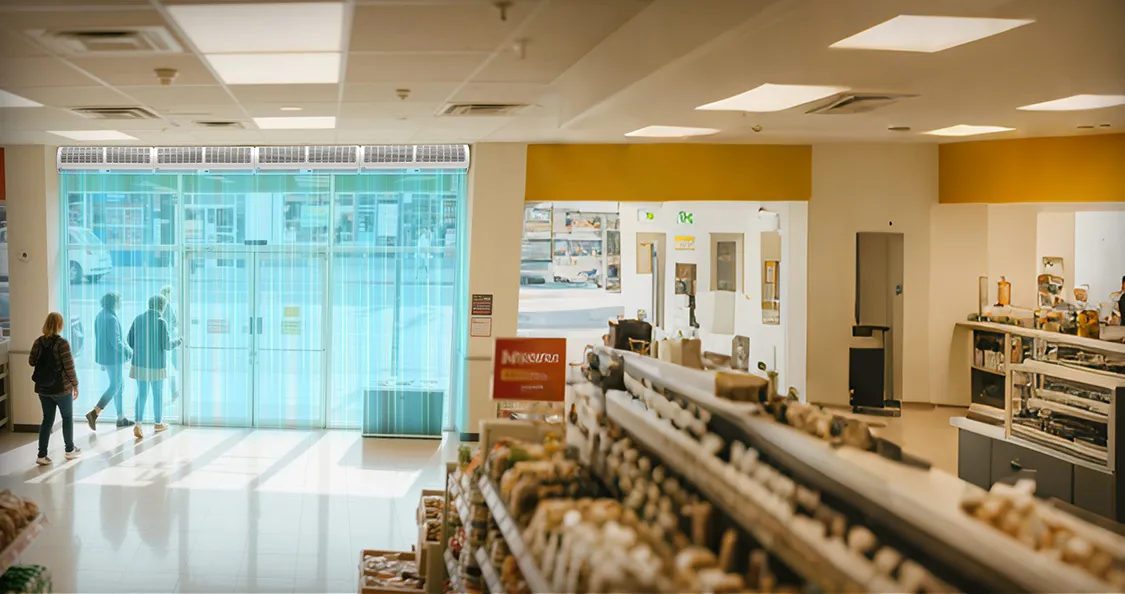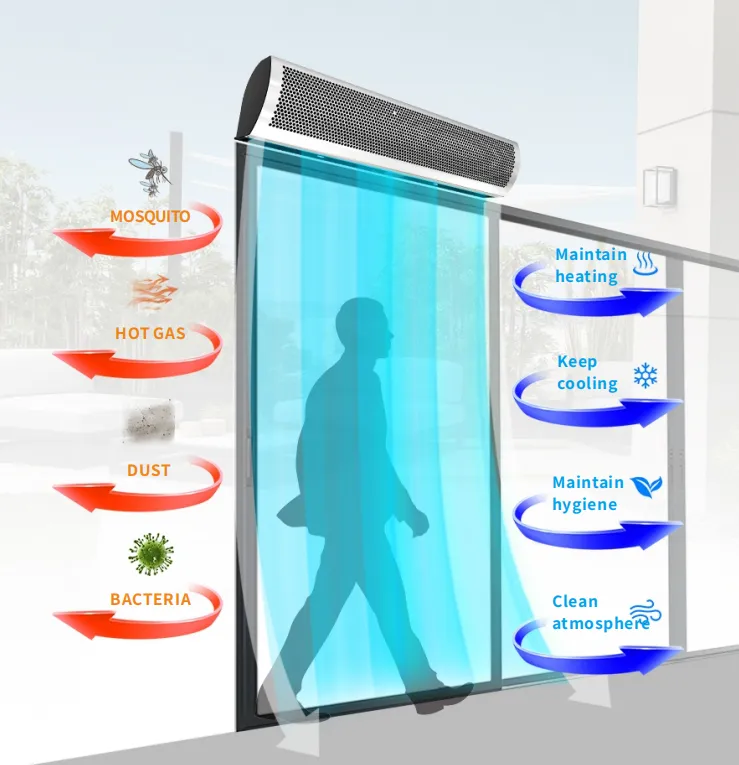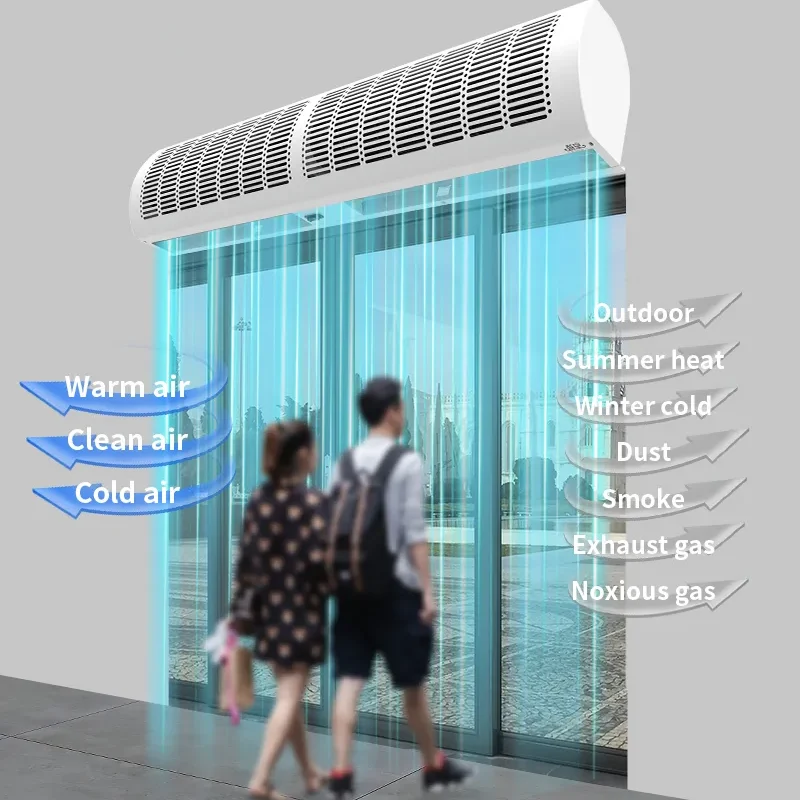Air Curtain : What It Is & 7 Powerful Benefits

What is an Air Curtain?
An air curtain is a device that creates an invisible air barrier over a doorway or entrance. Instead of using a physical door, an air curtain blows a controlled stream of air across an opening to separate two environments. This invisible “air door” helps maintain indoor climate, keep dust and insects out, and save energy.

Air curtains are commonly used in supermarkets, restaurants, offices, warehouses, and hospitals — anywhere you want people to walk through freely while keeping the inside air clean and conditioned.
Think of it as a virtual door made of air—a door you can walk through without obstruction.

How do air curtains work?
Let’s first understand the basic structure of air curtains. It’s not complicated.Its key components include shell, motor, wind wheel, and air guide blades.

These parts work together to create a seamless air barrier that keeps indoor environments stable.
The working principle of air curtains that air enters through the strip-shaped intake grille on the outer shell, where the internal motor drives the wind wheel to rotate and force the airflow through the outlet. At the center of the outlet, you can adjust the air guide blade to control the direction of the airflow, which is generally directed vertically downward.
Therefore, using a high-performance motor and wind wheel is very important, as they are among the key factors that determine the effectiveness of an air curtain.
What are the applicable scenarios for air curtain?
· Commercial Buildings
Supermarkets, shopping malls, retail stores, and restaurants – reduce HVAC energy loss, cut costs, and ensure hygiene compliance.
· Healthcare & Laboratories
Hospitals and clean facilities – protect sterile environments, maintain strict hygiene standards, and prevent contamination.
· Warehousing & Manufacturing
Industrial workshops and logistics centers – safeguard production processes from dust, save energy, and protect equipment.
· Cold Storage & Food Processing
Freezers, cold rooms, and food plants – minimize cold air loss, reduce energy consumption, and ensure HACCP compliance.
· Transportation Hubs
Airports, metro stations, and bus terminals – control energy loss in high-traffic zones and improve HVAC efficiency.
7 Powerful Benefits
- Energy Savings
- Improved Indoor Comfort
- Hygiene & Cleanliness
- Insect Control
- Easy Access & Safety
- Reduced Noise & Odors
- Versatile Applications
